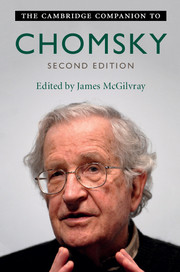Book contents
Part I - The Science of Language: Recent Change and Progress
Published online by Cambridge University Press: 13 July 2017
- Type
- Chapter
- Information
- The Cambridge Companion to Chomsky , pp. 27 - 152Publisher: Cambridge University PressPrint publication year: 2017



